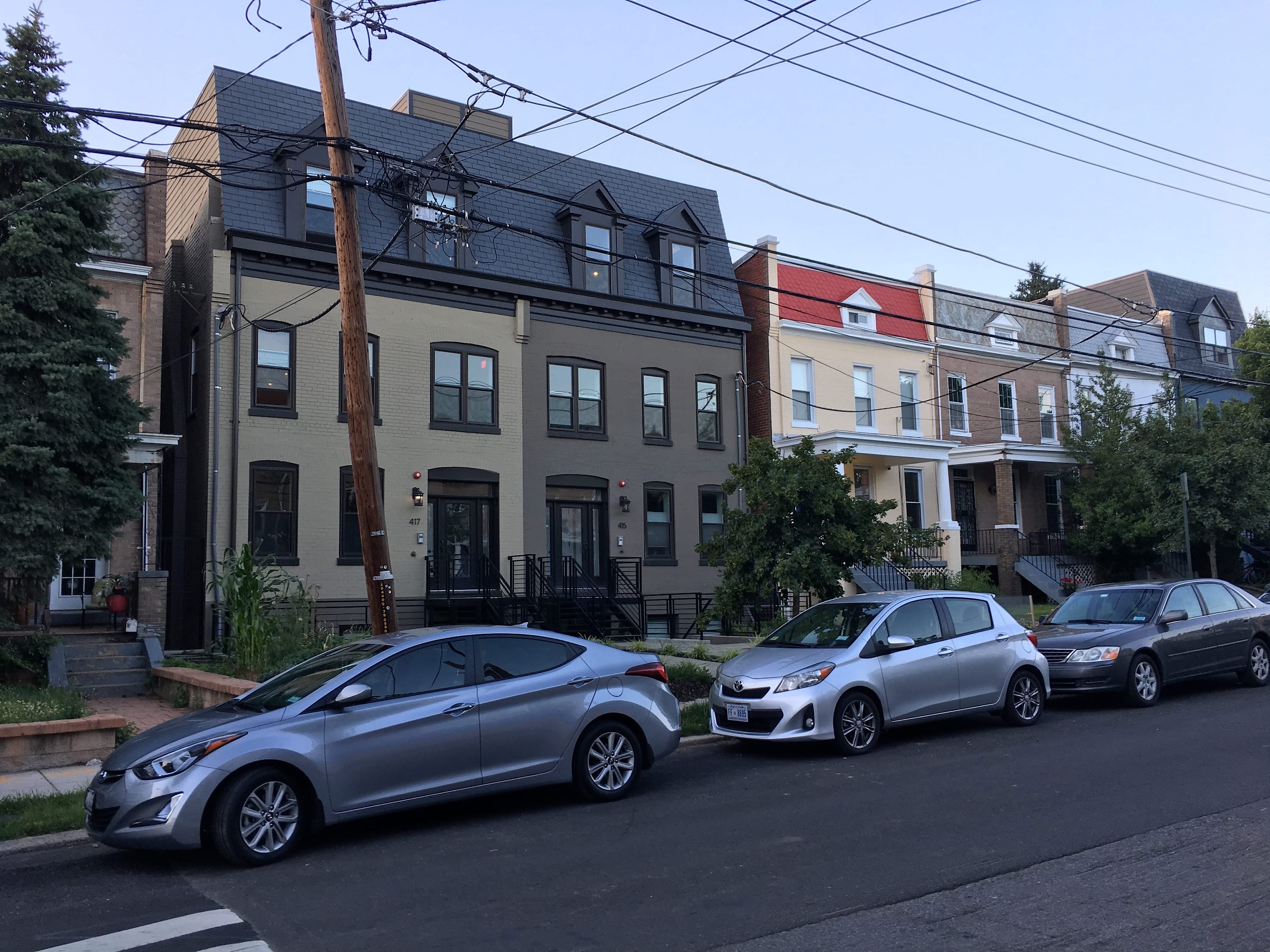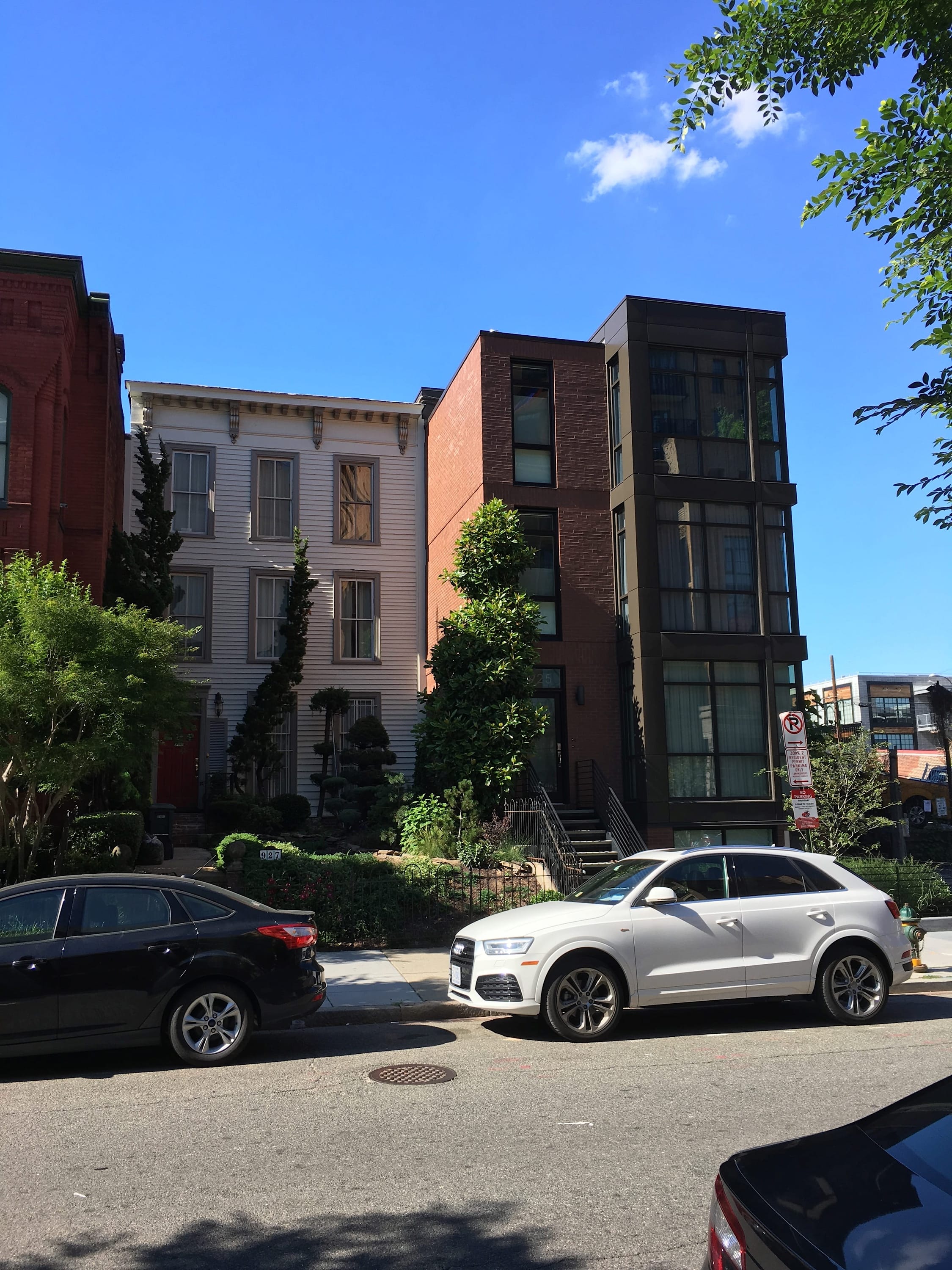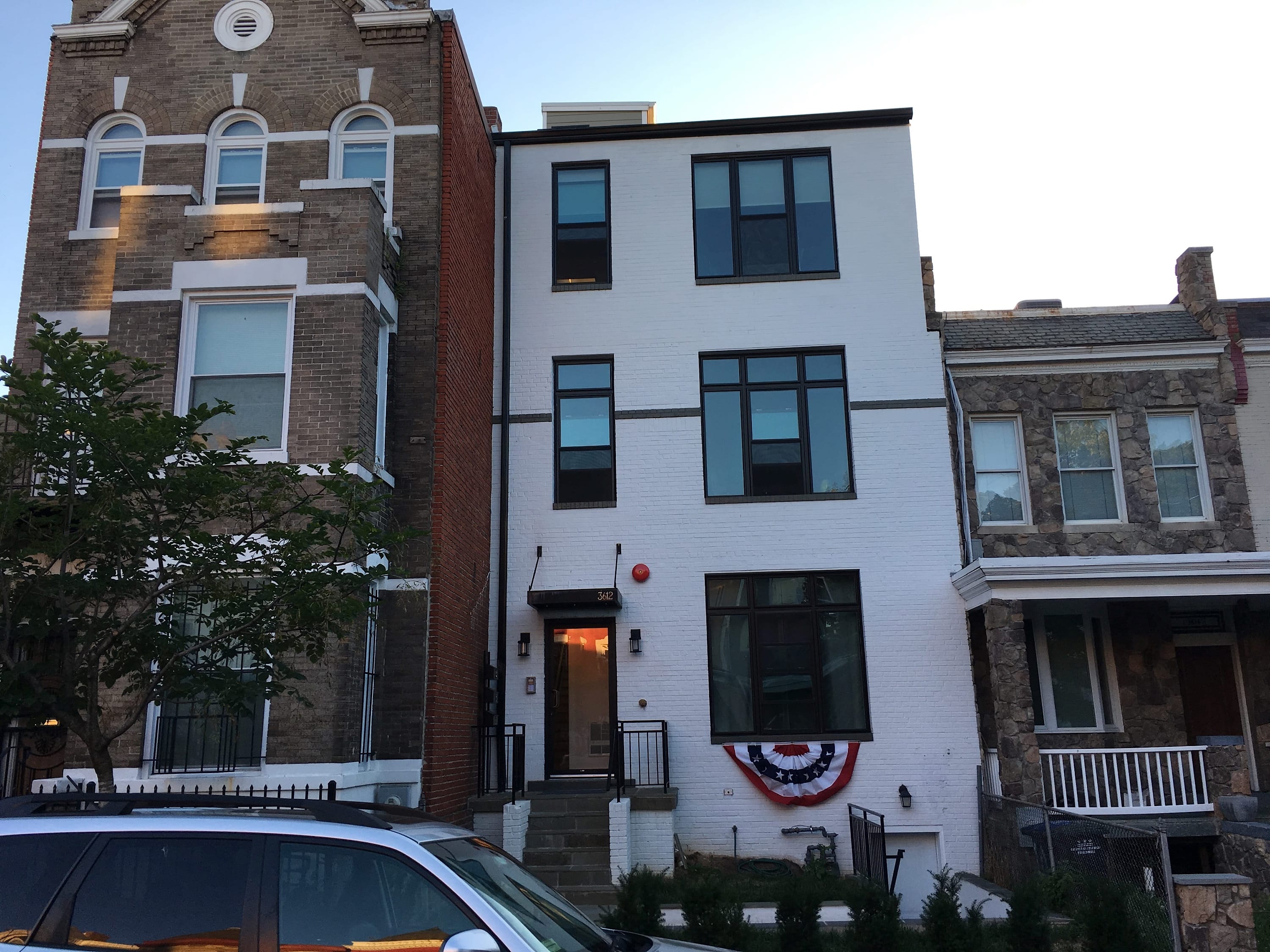While old buildings preserve a city’s heritage, new construction can add architectural diversity to a historical canvas. Blending the old with the new takes a trained eye and has the potential to create a striking environment. Done correctly, new buildings in an old neighborhood render longstanding success.
The most successful architectural cocktail happens when a project coheres with an existing setting without garishly copying or distracting from surrounding structures. The Columbia Heights and Petworth neighborhoods of Washington, D.C. have great examples of successful old-mixed-with-new projects. These neighborhoods are full of row homes built in the early 1900s and are experiencing heavy reinvestment. Deteriorating houses are extensively renovated or torn down completely. These neighborhoods provides examples of what – and what not – to do when considering new construction in an urban area with historic character.
Height Matters

Matt Dixon
DON’T: Although adding more livable square footage increases a home’s value, this third story addition seems arbitrary and out of place next to the neighboring two story homes. Be respectful of existing building heights, or your design could be perceived as careless and irresponsible.

Matt Dixon
DO: Though original third story spaces are rare in this area, the architect was able to achieve it by designing an appropriate façade that incorporates elements and scale of surrounding homes. The third story here is disguised as a slightly taller roof, so it resembles the surrounding homes.
The Devil is in the Details

Matt Dixon
DON’T: While these two townhomes may be beautiful on their own, no design cues were taken from the adjacent homes. Window sizes are mismatched, new materials are used, and new colors are introduced to the street. They seem out of place and detract from the historic neighboring homes.

Matt Dixon
DO: However, by mimicking overall shape and proportion, sharp edges on the right mesh with more traditional lines effortlessly.
Location, Location, Location
Some sites can work in the developer’s favor. Searching for a development site on an edge or corner and a site surrounded by differing styles and heights allows for greater freedom and the ability to break some rules as well.

Matt Dixon
DO: If row homes extended to the left of this project, something of this scale and style would seem out of place. This condominium development works since it hugs a drive on one side, and respects neighboring window scales. As a large addition to an existing row home, it adds to the appeal of the neighborhood by keeping the historic structure intact.

Matt Dixon
DO: Some developers might think a site sandwiched between different styled buildings would pin them in a corner, yet it actually provides more options and freedom. The new structure can take cues from either adjacent building or both. In this instance, the new build features a flat façade like the 2-story, but allows the original three-story rowhome to continue dominating the block.
New construction can add value to an older neighborhood. When done properly, developers can leave a legacy in a community for years to come.
Submitted by Matt Dixon, Land Use & Design Intern, Summer 2017

